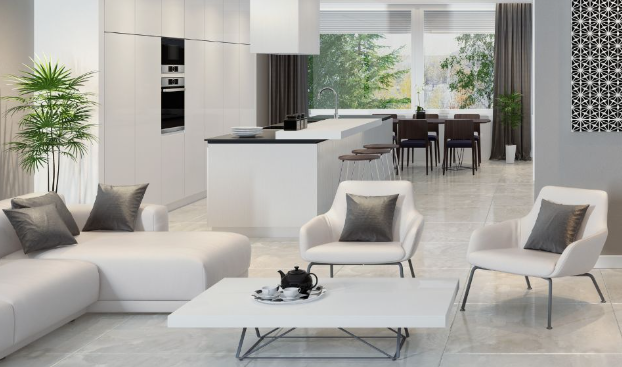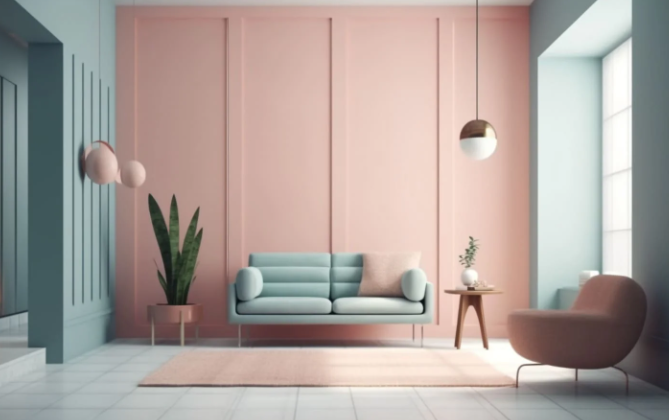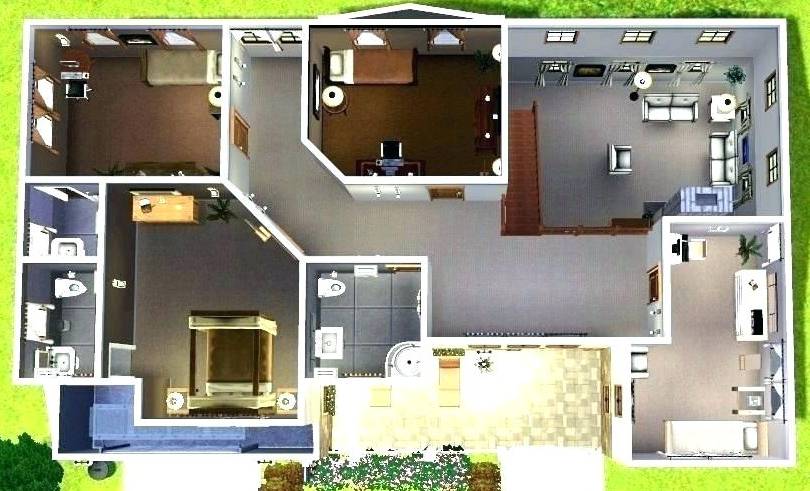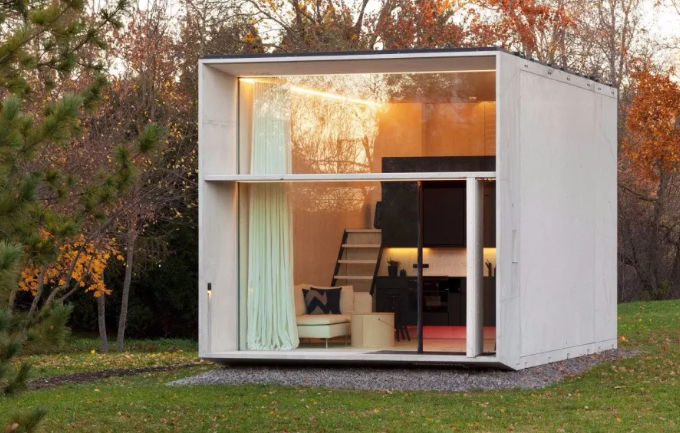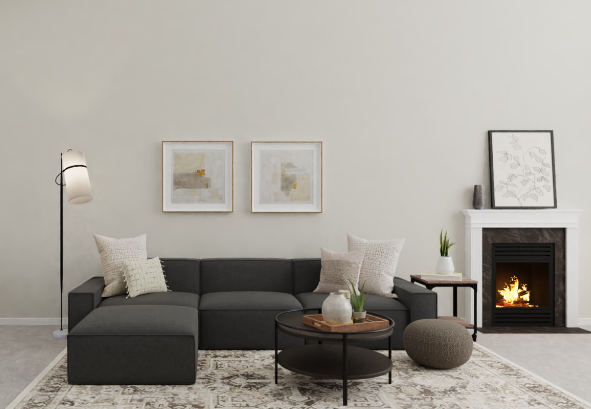Minimalism is more than just a trend—it’s a lifestyle. Embracing minimalist home decor means focusing on simplicity, functionality, and the beauty of less. If you want to achieve a clean and chic look for your home, these 10 minimalist decor ideas will help you transform your space into a serene and stylish sanctuary.
1. Embrace Neutral Colors 🎨
Neutral colors are the cornerstone of minimalist design. Think white, beige, gray, and soft earth tones. These colors create a calming and cohesive environment that allows other design elements to shine.
Design Pros:
- Creates a Calm Atmosphere: Neutral colors help to create a serene and peaceful environment, perfect for relaxation.
- Versatile: They can be easily paired with other colors and textures, making it easier to redecorate without a complete overhaul.
- Timeless Appeal: Neutral tones never go out of style, ensuring your decor remains chic over time.
Design Cons:
- Risk of Being Too Bland: Without the right accessories, neutral colors can sometimes feel cold or impersonal.
- Maintenance: Light colors, particularly white, can show dirt and stains more easily, requiring regular upkeep.
Ideas:
- Smart Lighting: Integrate smart lighting systems that allow you to adjust the warmth and intensity of your lights. Soft, warm lights complement neutral tones, enhancing the overall ambiance.
- Texture Play: Incorporate different textures like linen, wool, and wood to add depth and interest to your neutral palette.
2. Declutter and Simplify 🧹
Minimalism is all about living with less. Decluttering your space is the first step toward achieving a minimalist home. Keep only what you need and love; everything else should go.
Design Pros:
- Creates Space: Removing unnecessary items opens up your home, making it feel larger and more open.
- Reduces Stress: A clutter-free environment is proven to reduce stress and increase focus.
- Highlights Key Pieces: With less clutter, your favorite pieces of furniture or art can become focal points.
Design Cons:
- Storage Needs: Decluttering requires efficient storage solutions to keep essential items out of sight but easily accessible.
- Time-Consuming: The process of decluttering can be time-consuming and emotionally challenging for some.
Ideas:
- Smart Storage Solutions: Invest in multi-functional furniture, like ottomans with hidden storage or beds with built-in drawers, to keep your space tidy.
- Digital Declutter: Use apps to organize your digital files and reduce paper clutter. Going digital with documents and photos can save space and reduce clutter.
3. Invest in Quality Over Quantity 🛋️
Minimalism values quality over quantity. Choose a few high-quality pieces that will last and make a statement rather than filling your space with many items.
Design Pros:
- Durability: High-quality items are more durable, meaning they’ll last longer and reduce the need for frequent replacements.
- Aesthetic Appeal: Quality pieces often have a timeless design, adding to the overall elegance of your home.
- Environmental Impact: Investing in well-made items reduces waste and promotes sustainability.
Design Cons:
- Higher Cost: Quality pieces can be more expensive upfront, though they may save money in the long run.
- Limited Options: Focusing on quality over quantity may limit your choices, especially if you’re on a budget.
Ideas:
- Smart Shopping: Use apps to track sales and find discounts on high-quality items. Look for sustainable brands that offer durable, eco-friendly products.
- Mix and Match: Don’t be afraid to mix vintage and modern pieces. A well-chosen antique can add character to a minimalist space.
4. Keep It Functional 🛠️
Functionality is key in minimalist design. Every piece of furniture and decor should serve a purpose and contribute to the overall harmony of the space.
Design Pros:
- Efficient Use of Space: Functional furniture maximizes space, particularly in smaller homes or apartments.
- Less Clutter: Functional items often have built-in storage, reducing the need for additional storage solutions.
- Streamlined Design: Functionality often leads to a clean, streamlined design that’s visually appealing.
Design Cons:
- Aesthetic Sacrifice: Sometimes, functionality can come at the expense of aesthetics, especially with more utilitarian pieces.
- Limited Decor: Focusing on functionality may limit the amount of decorative items in your space.
Ideas:
- Multi-Purpose Furniture: Consider furniture that serves multiple functions, like a coffee table with storage compartments or a sofa bed.
- Smart Home Devices: Integrate smart home devices that improve functionality, such as automated blinds, smart thermostats, and voice-controlled lights.
5. Focus on Natural Light ☀️
Natural light is essential in minimalist design. It makes spaces feel larger, cleaner, and more inviting. Maximize natural light by keeping windows unobstructed and using light, airy curtains.
Design Pros:
- Enhances Mood: Natural light has been shown to improve mood and increase productivity.
- Energy Efficiency: Relying on natural light reduces the need for artificial lighting, saving energy.
- Expands Space: Sunlight creates the illusion of more space, making rooms feel bigger and more open.
Design Cons:
- Limited by Geography: Depending on where you live, natural light may be limited, especially in winter months.
- Privacy Concerns: Large windows that let in natural light can also compromise privacy if not properly managed.
Ideas:
- Smart Blinds: Install smart blinds that adjust based on the time of day to maximize natural light while maintaining privacy.
- Mirrors: Use mirrors strategically to reflect natural light and make the space feel even brighter.
6. Add Greenery 🌿
Plants are a great way to add life and color to a minimalist space. They improve air quality and bring a touch of nature indoors.
Design Pros:
- Improves Air Quality: Plants naturally purify the air, making your home healthier.
- Aesthetic Appeal: Greenery adds a pop of color and can soften the starkness of minimalist decor.
- Mental Health Benefits: Being around plants has been shown to reduce stress and increase feelings of well-being.
Design Cons:
- Maintenance: Plants require care and maintenance, which can be a challenge for those with busy lifestyles.
- Space Requirements: Larger plants may require significant space, which can be an issue in smaller homes.
Ideas:
- Smart Plant Care: Use smart plant care devices that monitor soil moisture, light levels, and temperature to keep your plants healthy.
- Low-Maintenance Plants: Choose low-maintenance plants like succulents or snake plants that require minimal care.
7. Incorporate Clean Lines 📏
Clean lines are a hallmark of minimalist design. Furniture and decor should have simple, sleek lines that contribute to a cohesive and uncluttered look.
Design Pros:
- Timeless Elegance: Clean lines create a sophisticated and timeless look that’s easy to maintain.
- Versatility: Simple designs with clean lines can easily adapt to different styles and trends.
- Visual Clarity: Clean lines help to create a sense of order and clarity, reducing visual noise.
Design Cons:
- Risk of Being Too Stark: Without careful selection, clean lines can sometimes feel too harsh or impersonal.
- Limited Creativity: Focusing too much on clean lines may limit creativity and personal expression in your decor.
Ideas:
- Custom Furniture: Consider custom-built furniture with clean lines to perfectly fit your space and style.
- Smart Layout Design: Use interior design software to experiment with different layouts and find the most functional and aesthetically pleasing arrangement.
8. Choose Minimal Art 🖼️
In a minimalist home, art should be simple and meaningful. Opt for pieces that resonate with you and avoid overcrowding your walls.
Design Pros:
- Personal Expression: Minimal art allows you to express your personality without overwhelming your space.
- Focus on Quality: With fewer pieces, you can invest in higher-quality art that holds more value.
- Enhances Space: Minimal art enhances the space without detracting from the overall design.
Design Cons:
- Limited Decor Options: Minimal art can limit your options, especially if you enjoy a more eclectic style.
- Potential for Emptiness: Too little art can make a space feel empty or unfinished.
Ideas:
- Digital Art Displays: Use digital art frames that can change images at the touch of a button, allowing you to switch up your decor easily.
- Rotating Exhibits: Consider rotating your art collection every few months to keep the space feeling fresh and new.
9. Prioritize Comfort 🛏️
Minimalism doesn’t mean sacrificing comfort. Choose furniture and decor that are both aesthetically pleasing and comfortable to live with.
Design Pros:
- Livability: Comfortable furniture makes your home more enjoyable to live in.
- Balanced Design: Comfort-focused design strikes a balance between aesthetics and functionality.
- Welcoming Atmosphere: Comfortable spaces are more inviting, making guests feel welcome and at ease.
Design Cons:
- Bulkiness: Some comfortable furniture can be bulkier, potentially disrupting the clean lines of a minimalist design.
- Higher Cost: High-quality, comfortable furniture often comes with a higher price
By: Calpico.co.id
